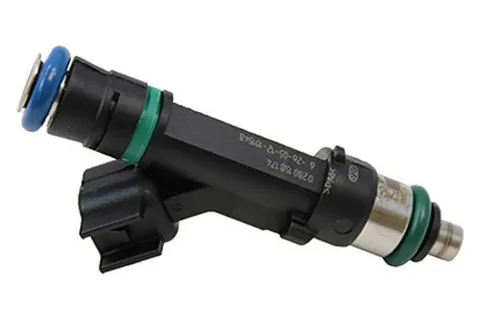Deep-cycle batteries are essential for various applications, from renewable energy systems to marine and caravan use. These batteries are designed to provide long-lasting power, making them the perfect choice for those who require a reliable and durable energy source. In this blog post, we will explore the many benefits of Deep Cycle Batteries and why they are the ideal power solution for various needs.
Understanding Deep-Cycle Batteries and Their Functionality
Deep-cycle batteries are distinct in their design, allowing them to dispense a stable power level for extended durations. It starkly contrasts standard automotive batteries, engineered to deliver a substantial energy surge briefly to initiate the vehicle’s engine. The capability of Deep-Cycle Batteries to provide a uniform energy output over lengthy periods renders them supremely suitable for scenarios necessitating a consistent and reliable power supply. Their structure is optimised for repeated deep discharges followed by recharges, a less prevalent cycle in traditional battery applications.
This attribute is advantageous for powering electrical appliances in remote locations, such as caravans, or sustaining energy needs in off-grid solar installations. The inherent resilience and the designed purpose of these batteries ensure they are a dependable source of power for a myriad of applications, standing apart from conventional battery options with their unique functionality and utility.
The Advantage of Longevity and Durability
A principal benefit of Deep-Cycle Batteries lies in their impressive lifespan and robustness. Engineered to endure the rigours of deep discharge and recharge cycles, these batteries can survive several hundred to thousands of cycles. This resilience translates into a more cost-efficient solution over time as the need for frequent replacements diminishes. Unlike conventional batteries that might falter under repeated use, Deep-Cycle Batteries are constructed to last, featuring robust construction and superior materials.
It ensures they maintain performance even when exposed to extreme weather or temperatures, affirming their status as a reliable power source for various applications. Their durability is not merely a matter of economic benefit but also contributes to the sustainability of resources by reducing waste and the demand for new batteries. This aspect of Deep-Cycle Batteries makes them an intelligent choice for those seeking a dependable power solution and individuals concerned with environmental sustainability. These batteries’ inherent longevity and sturdiness underscore their advantage, positioning them as an invaluable component in settings that demand reliability above all else.
Versatility across Various Applications
The utility of Deep-Cycle Batteries extends to diverse settings, underscoring their adaptability and broad-ranging application. Their capacity to deliver a consistent power output makes them indispensable in scenarios where traditional power sources are impractical or unavailable. For instance, in marine environments, they power a variety of vessels, ensuring navigation systems, lights, and communication devices remain operational during long voyages. Similarly, in the leisure sector, particularly for caravans and motorhomes, these batteries provide the electricity needed for lighting, refrigeration, and other domestic appliances, enabling a comfortable and self-sufficient lifestyle away from conventional power grids.
Additionally, the robustness and reliability of Deep-Cycle Batteries support critical backup power requirements for businesses and homes, safeguarding against power outages and ensuring continuity of operations and daily activities. This characteristic is also why they are favoured in remote locations for powering equipment in field operations across industries such as agriculture, mining, and telecommunications, where dependable power can be a matter of operational success or failure.
Their versatility is further highlighted in the integration with renewable energy sources, where they store energy generated from solar panels or wind turbines, providing a stable power supply regardless of weather conditions. This adaptability showcases their utility across various domains and amplifies their significance in modern power solutions.
The Role of Lithium Batteries in Renewable Energy Systems
Lithium Batteries are popular within renewable energy frameworks due to their superior energy density and extensive cycle life. These attributes make them exceedingly efficient at storing significant quantities of energy generated from renewable sources, such as solar panels and wind turbines. Their efficiency is further magnified by their ability to maintain a consistent power supply, even under variable weather conditions, thus ensuring reliability where traditional power sources may falter. This reliability is crucial for off-grid and grid-tied systems, aiming for a seamless transition to greener energy solutions.
Moreover, the compactness and lighter weight of Lithium Deep-Cycle Batteries contribute to their appeal in renewable energy applications, allowing for more flexible installation options and efficient use of space. Their lower maintenance requirements and a longer lifespan than traditional battery types position them as a forward-thinking choice for those invested in building sustainable and efficient energy systems. This efficiency enhances the operational capabilities of renewable energy setups and aligns with the global push towards reducing carbon emissions and fostering a sustainable energy future.
Their role extends beyond mere energy storage; Lithium Deep-Cycle Batteries also facilitate the optimal utilisation of renewable resources, enabling users to maximise the benefits of their investment in renewable energy technologies. Through their integration, these batteries are pivotal in accelerating the transition towards a more sustainable and resilient energy landscape.
Environmental Benefits and Sustainability
Deep-cycle batteries represent a pivotal shift towards eco-friendly energy solutions, especially when integrated into renewable energy systems. Their ability to significantly lower dependence on non-renewable energy sources plays a crucial role in minimising carbon footprints, a vital step in combating climate change. The recyclability of these batteries marks another stride towards environmental stewardship, ensuring that their end-of-life impact is mitigated through responsible disposal practices.
Furthermore, using deep-cycle batteries to capture and store renewable energy contributes to a more sustainable utilisation of natural resources. By facilitating the efficient use of solar and wind power, these batteries help reduce the overall consumption of fossil fuels, thus aiding in preserving the environment for future generations. Their contribution extends beyond mere energy storage; it encompasses a broader commitment to sustainability and ecological conservation, highlighting their role as a cornerstone in the transition towards more sustainable energy landscapes.
Tips for Maximising the Life of 12V Lithium Batteries
Several practices are recommended to optimise the longevity of your 12V Lithium Batteries.
Use a Unique Design
Utilising a charger explicitly designed for lithium-batteries is critical, as mismatched charging equipment can lead to under or overcharging, adversely affecting the battery’s health and lifespan.
Maintain your Battery
Furthermore, maintaining the battery within its recommended charge levels is essential; completely draining a lithium battery can cause significant damage, thereby shortening its life. Regularly cycling the battery to just 20% of its capacity before recharging can help maintain its efficiency over time.
Storage Environment
Another vital consideration is the storage environment for these batteries. Exposure to extreme hot or cold temperatures can severely impact battery performance and durability. Lithium-batteries should be stored in a location that remains within their recommended temperature range to prevent capacity loss or damage.
Additionally, ensuring the battery is not discharged for extended periods is crucial for maintaining its health. If the battery will not be used for some time, it should be charged to approximately 50% before storage, checking it periodically and topping it up if needed.
Future Trends in Deep-Cycle Battery Technology
The horizon for Deep-Cycle Battery technology is set for transformative developments that will redefine their power storage and delivery role. Innovations in material science are anticipated to usher in batteries with enhanced energy density, allowing them to store more power in a comparably smaller footprint. This leap in energy density will be instrumental in expanding the usability of Deep-Cycle Batteries across a wider range of applications, from more efficient electric vehicles to compact, portable power solutions for remote applications.
Another promising direction is refining battery chemistry and architecture to dramatically increase cycle life. It will enhance their economic value by extending the periods between replacements and significantly contribute to sustainability goals by reducing waste.
Emerging charging technologies are expected to significantly reduce charging times, making Deep-Cycle Batteries more convenient for applications with critical turnaround times. Furthermore, integrating smart technology into battery systems is likely to become standard, enabling real-time monitoring and management of battery health, thereby optimising performance and preventing premature degradation.
Collectively, these advancements herald a new era for Deep-Cycle Batteries, positioning them at the forefront of sustainable energy solutions.
Advancements in Charging and Discharging Technology
The charging and discharging technology for deep-cycle batteries has seen significant strides, greatly enhancing their efficiency and convenience. Innovations in smart charging systems have revolutionised how these batteries are maintained, offering precise control over the charging process. Such systems can optimally manage the charge rate to match the battery’s condition and usage pattern, thereby maximising battery life and performance.
Additionally, rapid charging capabilities have drastically reduced the time required to bring batteries to full capacity, ensuring they are ready for use in considerably less time. This progress is instrumental in settings where time is of the essence, allowing for swift energy replenishment.
The development of advanced battery management systems further complements these charging innovations by meticulously monitoring the battery’s health and adjusting charging parameters in real time. It ensures the battery operates within its ideal conditions, significantly reducing the risk of overcharging or deep discharging, which could previously compromise its longevity. These technological advancements have streamlined the management of Deep-Cycle Batteries and propelled their applicability and reliability in energy storage and supply to new heights.
Conclusion
Deep cycle batteries are a beacon of reliability, sustainability, and versatility in the modern quest for efficient, eco-friendly power solutions. Their robust design, capable of enduring numerous charge and discharge cycles, not only presents an economical choice over the long term but also aligns with environmental conservation efforts. The adaptability of these batteries across many applications—from remote, off-grid installations to the heart of renewable energy systems—underscores their pivotal role in the ongoing transition towards sustainable energy practices.
FAQs
Q: Are lithium Batteries a good fit for powering off-grid solar installations?
A: Absolutely. lithium Batteries excel in off-grid solar installations due to their ability to efficiently store solar energy, ensuring a consistent power supply throughout varied weather conditions and during the night.
Q: What is the typical lifespan of a Deep-Cycle Battery?
A: The longevity of Deep-Cycle Batteries depends greatly on their care and application; however, they are constructed to endure hundreds to thousands of charge-discharge cycles. Proper maintenance and usage can significantly extend their lifespan.
Q: Can the use of Deep-Cycle Batteries contribute to environmental sustainability?
A: Indeed, integrating Deep-Cycle Batteries into renewable energy systems reduces dependency on fossil fuels and minimises carbon emissions, aligning with efforts to protect the environment. Their role in storing renewable energy and their potential for recyclability further enhance their eco-friendly credentials.




